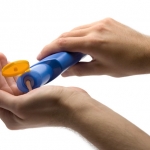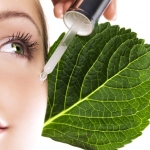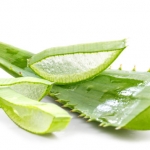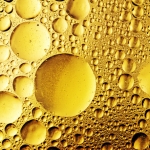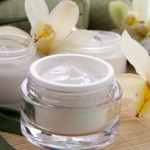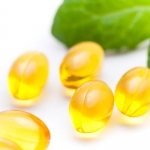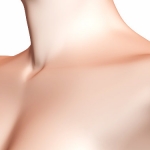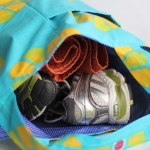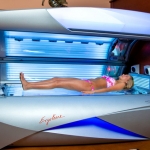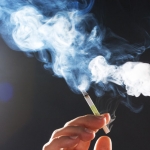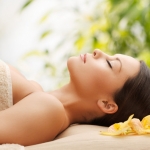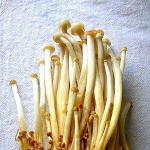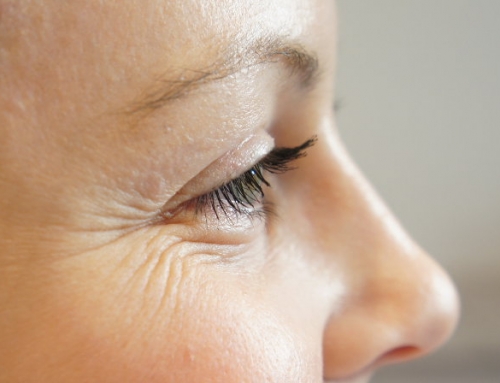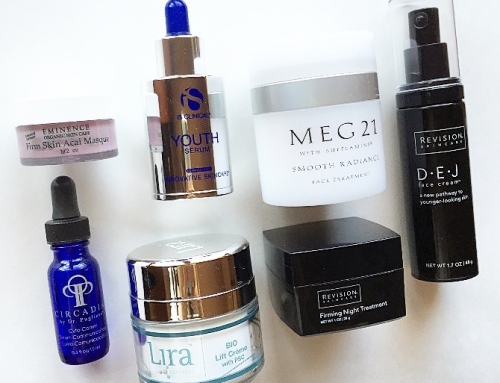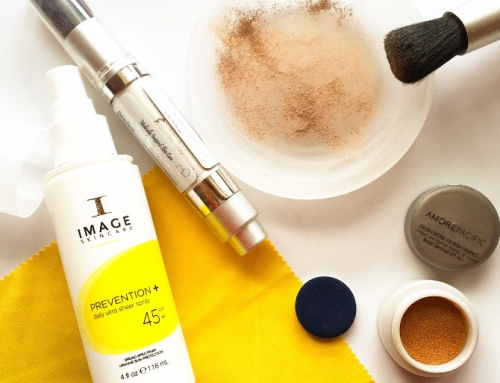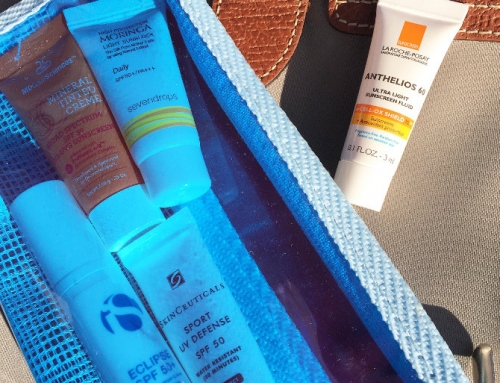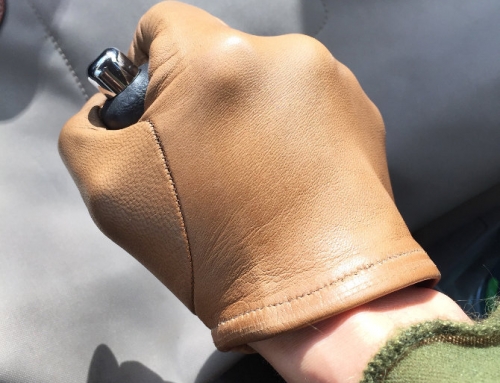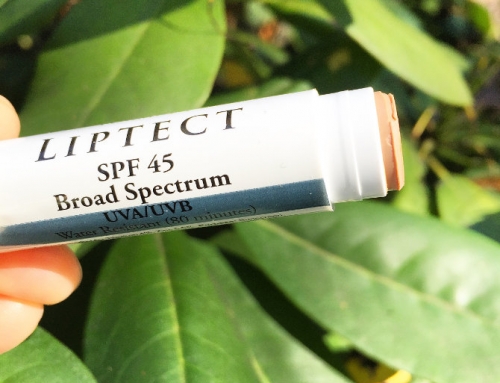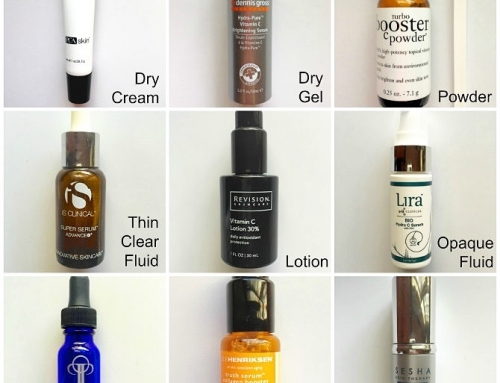In case you missed yesterday’s post, the Anti-Aging Strategies Recap provides some helpful background for these tips. The Recap is a 1-page summary of everything I’ve talked about so far, and takes about 5-10 minutes to read.
This list is meant for those of you who are just starting to learn about anti-aging or want to keep things simple.
21 Anti Aging Tips
PRODUCTS YOU NEED
1. A sunscreen with Zinc Oxide. Make sure you see ‘Broad Spectrum SPF’ on the product label (if you’re in the U.S.)
Zinc Oxide is the best ingredient for blocking both UVA and UVB. If you don’t like the way this ingredient looks or feels on your skin, then read this for alternatives.
2. A moisturizer or serum that has Vitamin C. Apply to your face once or twice a day (AM and/or PM).
Vitamin C is an essential antioxidant in skin care. Here are the anti-aging benefits of Vitamin C.
Consider a separate Vitamin C serum if you do NOT have sensitive skin. A serum provides a more concentrated amount of Vitamin C than a moisturizer. Avoid Ascorbic Acid (this page explains why). If you have sensitive skin, you may still be able to use a Vitamin C serum. It depends on the form of the Vitamin C.
3. Vitamin A in that moisturizer or serum.
Vitamin A is the main weapon against aging. There are several forms of Vitamin A. The most effective form that doesn’t require a prescription is Retinol. If you have sensitive skin, don’t use Retinol – look for Retinyl Palmitate or Retinyl Acetate (more gentle forms). You can read this to understand the different derivatives of Vitamin A.
4. Multiple antioxidants in the moisturizer or serum.
Examples: Grape Seed, Green or White Tea, Licorice, Niacinamide, Lycopene, Alpha Lipoic Acid, Coenzyme Q10. Here is a list of some popular antioxidants. Botanicals, such as flowers, herbs, fruits, and vegetables, are common sources. They’re all over skin care.
5. Anti-inflammatory ingredients in the moisturizer or serum.
Examples: Oat, Green Tea, Chamomile, Licorice, Aloe, Arnica, Mugwort, Milk Thistle. Here is a list of anti-inflammatory ingredients.
Chronic, low-level inflammation is a long-term source of aging. Putting anti-inflammatory ingredients on your skin daily, even if you don’t have sensitive or irritated skin, counters this chronic inflammation.
6. Lipid ingredients, such as plant oils, in the moisturizer. If you have oily skin, you can still apply oil but need to be careful choosing suitable ones. If you have combination skin, don’t put a lipid-rich moisturizer on the oily or blackhead-prone areas.
It is important to maintain a strong skin barrier function. An intact barrier holds in water better and keeps out irritants. When the barrier is damaged, skin is more vulnerable to inflammation, a major source of aging.
Lipids strengthen the barrier. Here is a list of lipids commonly used in skin care.
Lipids are even more important if you have dry skin and are over 40. We need more lipids as we age, since lipids in the epidermis decrease significantly after 40.
Remember, dry means lack of oil, dehydrated means lack of water.
If you’re oily, read this to learn more about How Oil Can Help Oily Skin.
7. A hydrating toner with humectant ingredients. Apply all over the face after you cleanse, and before you add serum or moisturizer.
Skin needs constant hydration, since water evaporates from the skin continually. Dehydrated skin, especially around the eyes, wrinkles more easily. To hydrate skin, you need humectant ingredients, which attract and hold onto water. The most common sources are: Hyaluronic Acid (aka Sodium Hyaluronate), Propylene Glycol, Butylene Glycol, Panthenol, Sodium PCA, Algae, and certain Amino Acids.
Obviously, drinking water is good for you. But just drinking a lot of water isn’t enough for skin. You need humectants to hold onto water that is lost through evaporation. Here are tips on how to hydrate skin with a toner.
A hydrating toner also preps the skin for the moisturizer step. With toner, skin absorbs more of the ingredients from a moisturizer. Think of a sponge. Which sponge picks up more water – a dry sponge or a wet sponge? A wet sponge. Skin works the same way. ‘Wet’ your skin first with the toner, and your skin (the sponge) will pick up more of the ingredients from the moisturizer. The toner will keep your skin hydrated longer.
8. An emollient eye cream.
The skin around the eyes is the thinnest on the body. Therefore, it loses water easily. Don’t let your eye area get dry. Skin wrinkles more easily when dry. If it does, apply more cream during the day.
Look for a cream that is rich in lipids, which strengthens the barrier function, or silicones, which create an occlusive layer over skin (prevents water loss).
Here is a list of lipid ingredients. Common silicones are Methicone, Dimethicone, and Cyclomethicone.
If your cream is not emollient enough (your skin feels dry soon after), layer another cream over it. If you’re on a budget and can’t afford an eye cream, a regular moisturizer is just fine (unless you find that it irritates your eyes).
Here are tips on how to apply eye cream for optimal results.
9. A daily Vitamin E supplement. 400 IU is the FDA recommended amount.
It is impossible to get the daily requirement of Vitamin E from food alone, so a supplement is a boost for skin.
If you have the time and motivation, you can add Vitamin E to a moisturizer. But because Vitamin E oxidizes, mix only what you need for at most a week’s supply. Keep your mixture away from heat and light, in a dark area such as a cabinet or drawer.
10. A wide brim hat with at least a 3 inch brim.
Make sure the fabric is a tight weave. Not straw, which is ‘porous’ and allows UV rays through. Darker colors are more protective.
Remember that you still get UV rays in the shade. UV reflects off pavement, sand, and snow.
GOOD HABITS
11. Stay out of the sun!
The UV rays from sun are responsible for over 80% of the signs of skin aging. Preventing damage is so much easier than correcting it. By far the easiest way to slow aging is to minimize your time in the sun.
That said, of course it is not realistic or desirable to stay completely out of the sun. You do need sunshine for Vitamin D, and life would not be nice without our enjoyment of sunshine. So when I say “stay out of the sun,” I mean don’t sunbathe, avoid intense sunshine, stay out of the sun during peak hours of the day (10-2), and wear sunscreen when you are outside.
12. Wear sunscreen, even when it’s cloudy. Be diligent about it.
You need to wear sunscreen when you are outside. The ‘aging ray’, UVA, passes through clouds and window glass. UVA causes wrinkles & sagging, along with spots and discoloration.
Many people make the mistake of skipping sunscreen when it is cloudy. Sunscreen is not just for sunny days or activities at the beach. UVA rays are just as strong on a cloudy day. (UVB, the ray primarily responsible for burning, is what you notice on a sunny day.)
13. Cover up when you’re outside. Wear a hat to shield your face. Gloves if you spend a lot of time driving. Long-sleeved clothing if you will be in the sun for more than a couple hours.
This seems so obvious, but it is harder to put into practice than it seems. Covering up is not always convenient or comfortable, but it does make a difference.
You can buy sun protective clothing made of UPF fabrics, which are treated with UV absorbers.
14. Don’t forget to apply sunscreen to your neck, decollete (if it’s exposed), and hands.
The skin on the neck loses firmness and becomes loose, which is difficult to correct. The decollete pigments easily. People with sun damage typically have dark discoloration and spots in this area.
If you wear perfume or cologne on your neck or decollete, it is especially important to wear sunscreen there. Artificial fragrance can cause photosensitivity and increase pigmentation.
15. Keep an extra tube/bottle of sunscreen at work, in the car, or in your gym bag/purse. Touch up during the day.
It’s easy to skip sunscreen when sunscreen is not within reach. Touch-ups are needed too. Sunscreen loses its efficacy after a few hours. Also, most people have a tendency to not apply enough.
16. Don’t use a tanning bed. Ever.
It is highly destructive to skin. Tanning beds utilize UVA light, which is 12 times more damaging than being in the sun. The damage makes skin thick and rough, and creates deep and coarse wrinkles. This is an example of environmental aging, which looks different from genetic aging (where skin becomes thinner and wrinkles appear as fine lines).
17. Watch your sugar intake.
Excess sugar will attach to collagen in skin, cross-linking it. Cross-linking hardens collagen and makes skin lose its firmness. It also leads to age spots.
18. Stay away from secondhand smoke.
Even if you’re not a smoker, secondhand smoke (whether from cigarettes or cigars), will launch a destructive free radical chain reaction in your skin that lasts for at least a day. Smoke is a massive accelerator of aging. I cannot emphasize enough how damaging smoke is. So step away from smoky areas.
19. Find outlets for stress and get enough sleep.
Stress is a major accelerator of aging too. Cortisol, a stress hormone, thins the skin. Sleeping helps control it. Cortisol levels are higher when you lack sleep. More on stress here.
20. Eat an antioxidant-rich diet. Try to spread your consumption throughout the day.
Water-soluble antioxidants don’t last long. They need to be replenished constantly. So try to get antioxidants into each meal or snack.
Antioxidize first thing in the morning. Start your day with something high in Vitamin C, such as a fresh orange or lemon juice in water (room temperature).
Visit my skin nutrition pinboards on Pinterest to see foods that are healthy for skin.
21. Eat mushrooms, fresh or dried (assuming you don’t dislike them)
For Ergothioneine, a powerful antioxidant that will boost cellular energy. That energy is needed to repair DNA damaged by free radicals. Mushrooms are the richest natural source of ergothioneine. Eating mushrooms is the easiest way to obtain it. It’s not easy to find in skin care products.
Related Articles:


